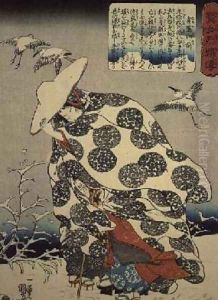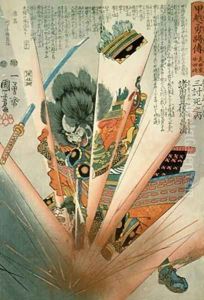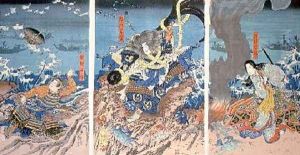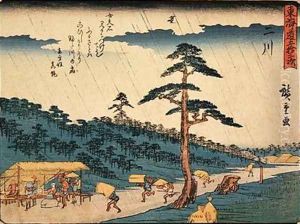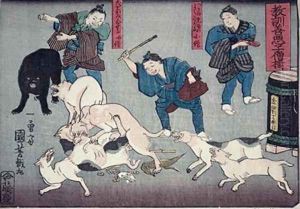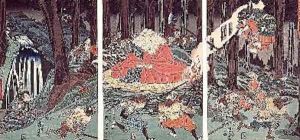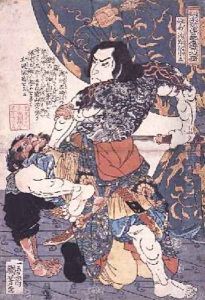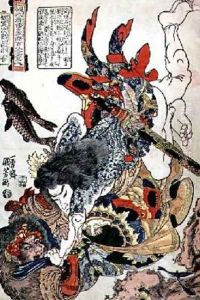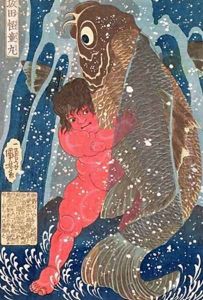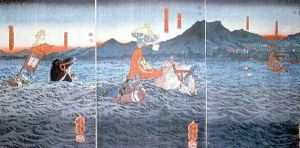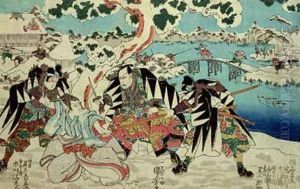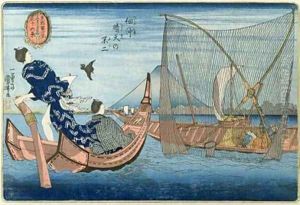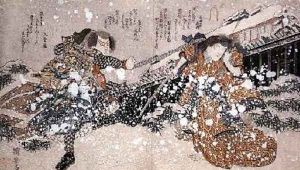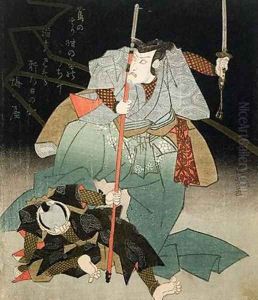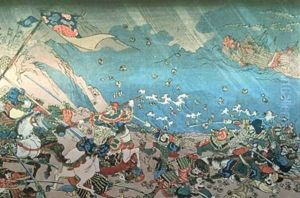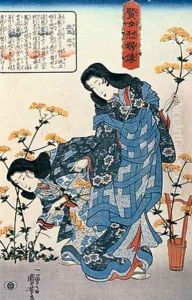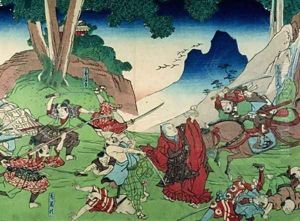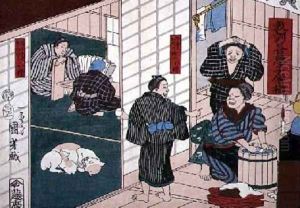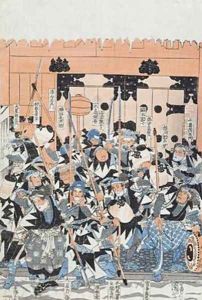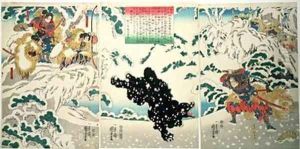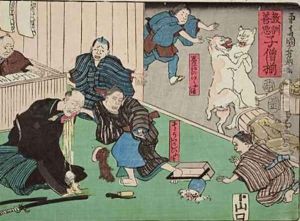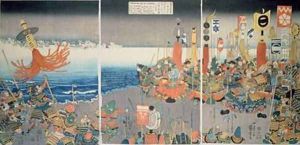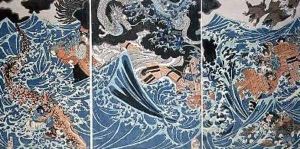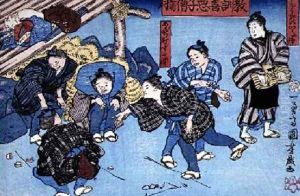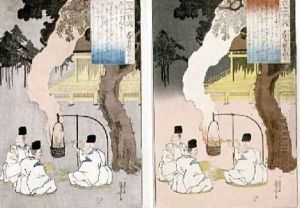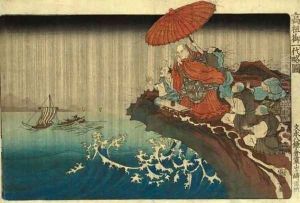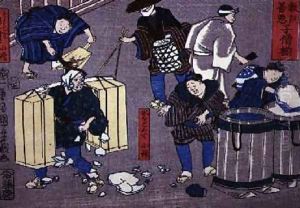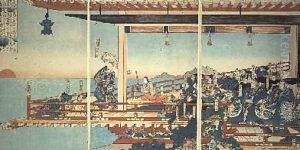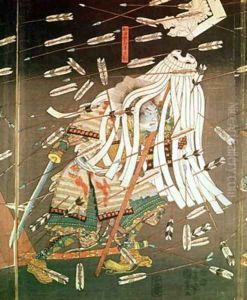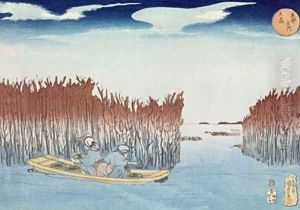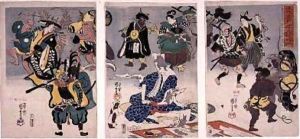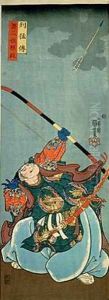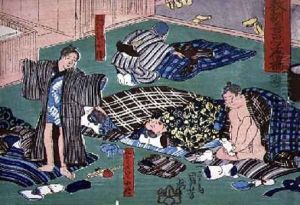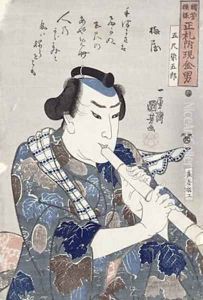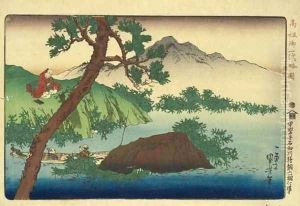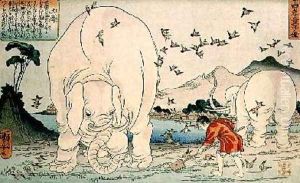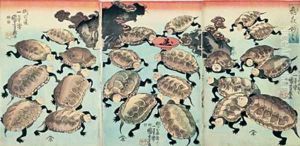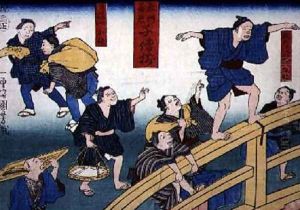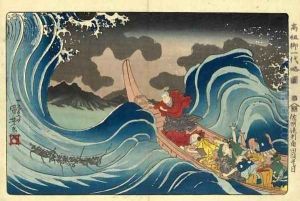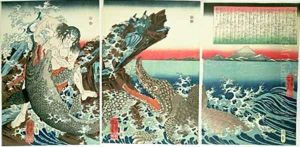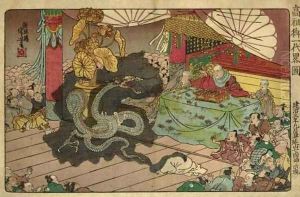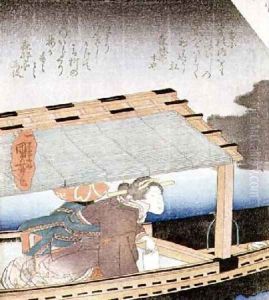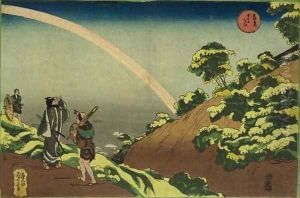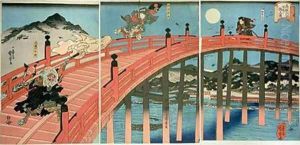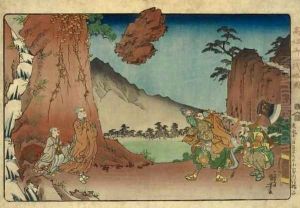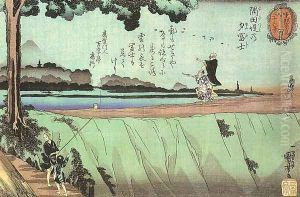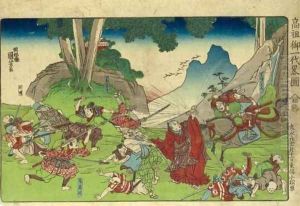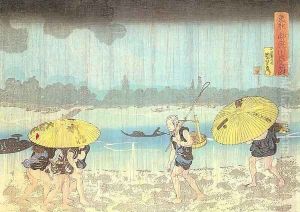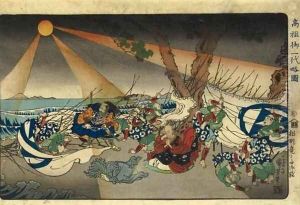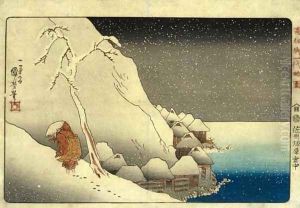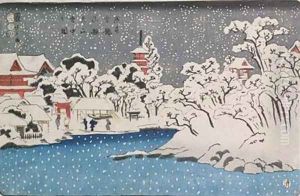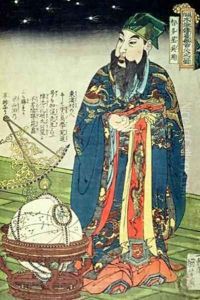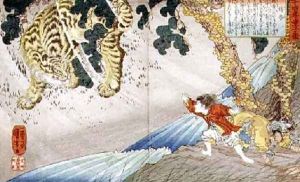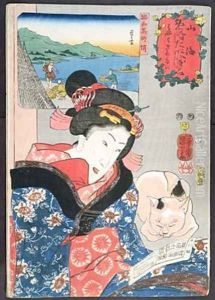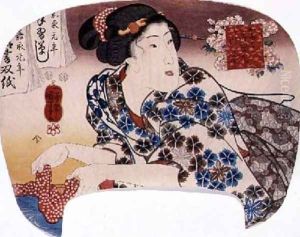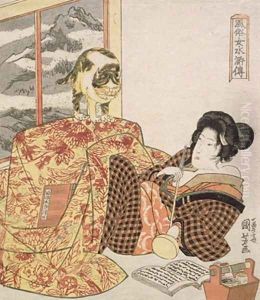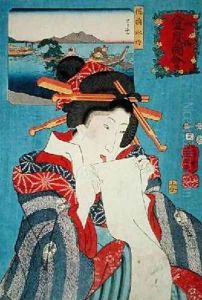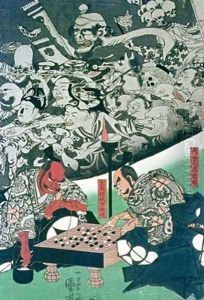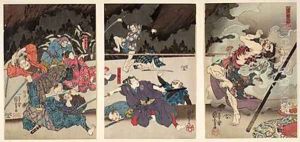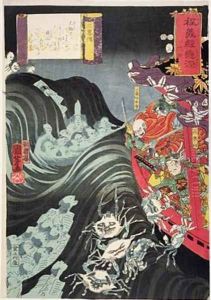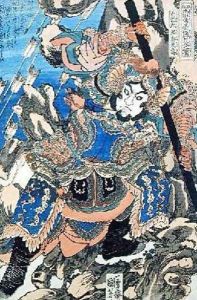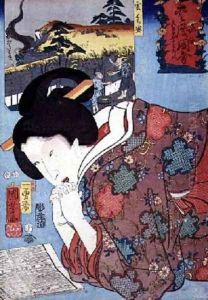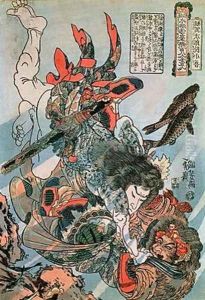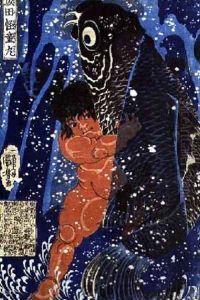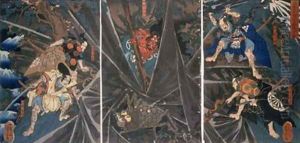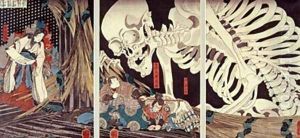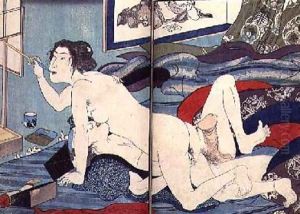Utagawa Kuniyoshi Paintings
Utagawa Kuniyoshi was a Japanese ukiyo-e artist of the Edo period, celebrated for his illustrations of warriors, landscapes, and animals. Born in 1797 in Edo (modern-day Tokyo), Kuniyoshi was the son of a silk-dyer. Initially, he showed little interest in continuing his father's trade and instead developed a passion for drawing and art. At the age of 14, he joined the Utagawa school under the tutelage of Utagawa Toyokuni I, who was a prominent and influential artist of the time.
Kuniyoshi's early works were relatively conventional, but he eventually found his voice in the warrior print genre, which depicted scenes from Japanese folklore, history, and literature, often featuring samurai and mythical heroes. His series '108 Heroes of the Popular Suikoden' (1827–1830), based on Chinese adventure tales, was particularly famous. These prints were characterized by their vivid detail and dynamic composition, earning Kuniyoshi considerable recognition.
His style continued to evolve, and Kuniyoshi began incorporating elements of Western art into his work, such as the use of perspective and shadow, which was unusual for ukiyo-e artists of his time. He was also known for his satirical and humorous prints, which often cleverly commented on contemporary societal issues under the guise of historical narratives, allowing him to evade censorship under the Tokugawa shogunate's strict regime.
Throughout his career, Kuniyoshi faced financial difficulties and periods of economic hardship due to changes in the political climate and the tastes of the art-consuming public. Nevertheless, his innovative approach to subject matter and technique influenced many artists of his time and later generations.
Kuniyoshi also taught numerous students who would go on to become significant artists themselves, including Tsukioka Yoshitoshi. In the final years of his life, Kuniyoshi suffered from palsy, which affected his ability to paint. Nevertheless, he continued to produce work until his death in 1861. Today, Utagawa Kuniyoshi is remembered as one of the last great masters of the ukiyo-e tradition, with his works held in high esteem and collected by art enthusiasts around the world.
